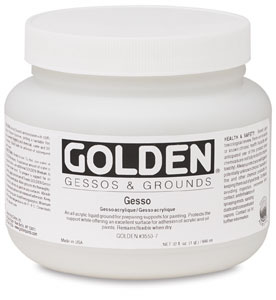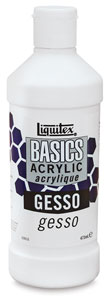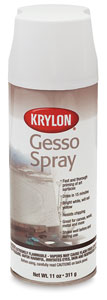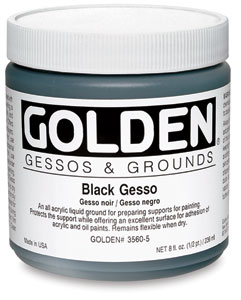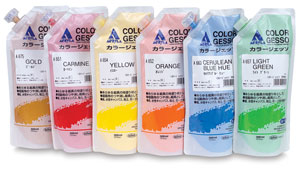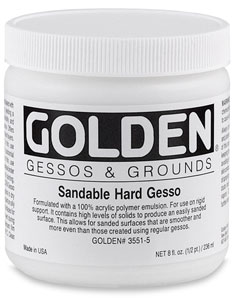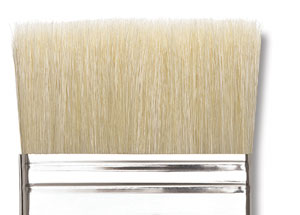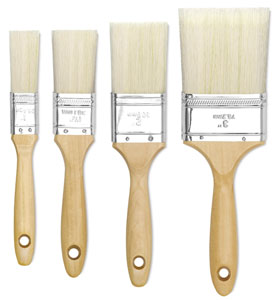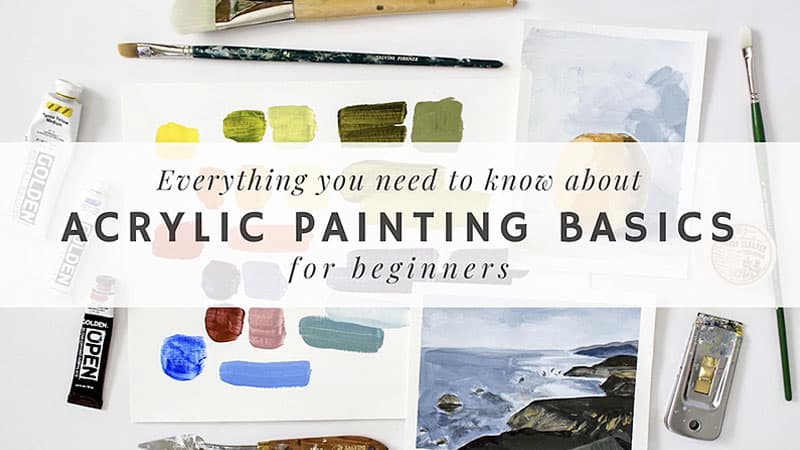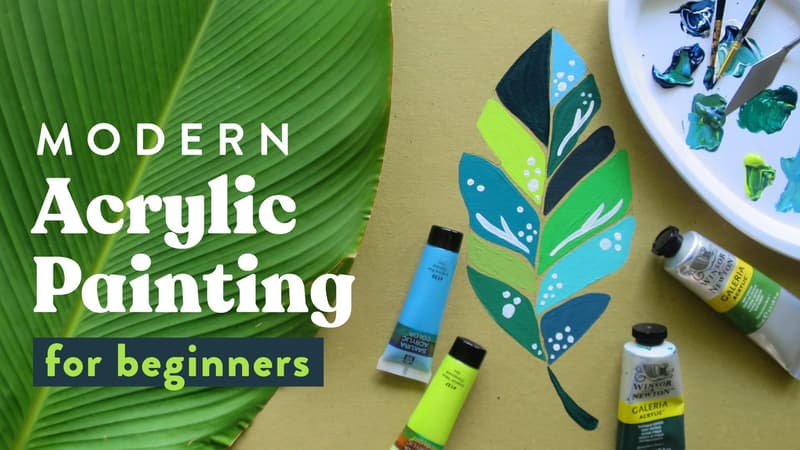What is Gesso?
If you are new to acrylics, you may be wondering - what is gesso and why do I need to know about it? Step right up - this page will tell you all about the glories of gesso and how to use it.
Gesso is an important art supply to get your canvas ready for painting. You can buy gesso readymade from any art supply shop. Gesso is very similar to white acrylic paint, only thinner. It dries hard, making the surface more stiff. Gesso prepares (or "primes") the surface for painting, making the surface slightly textured and ready to accept acrylic paint. Without gesso, the paint would soak into the weave of the canvas.
The word gesso is a noun, but many artists also use it as a verb. For example: "You need to gesso your canvas before you paint."
The beauty of gesso is that you can apply it to nearly any surface, and then you can paint on that surface with acrylic paint. For example, you can apply a layer or two of gesso to vinyl records, rubber duckies, or cigar boxes, and voila - you can now paint on that object with acrylics! What fun. The possibilities are endless!
Different types of gesso
Gesso is traditionally white, but nowadays you can also buy black, clear gesso and colored gesso readymade (these link to Blick Art Materials, and if you make a purchase I get a small commission that helps support this site). You can also tint your gesso to make any color you want. Just mix a little acrylic paint to the gesso, and you've got some tinted gesso!
There are two different grades of gesso: Artist grade and Student grade. The difference between the two amounts to the different ratios of pigment vs. filler. The Student grade is cheaper because it contains more filler than the Artist grade. Artist grade has more pigment than Student grade, making it thicker and more opaque. These differences are reflected in the price, and also in the quality. Student grade is usually available only in white, but as mentioned earlier, you can add acrylic paint to the gesso to make it more pigmented.
The consistency and texture of gesso will vary from brand to brand. Some are more liquidy and others are more thick. Some apply more smoothly and others leave a more textured, toothy surface. You'll have to experiment with different brands to find the one you like best. Liquitex Super Heavy Gesso is great for applying sculptural effects to the canvas with a brush or palette knife.
Gesso comes in both squeeze bottle form and in large tubs or jars. With the squeeze bottles, you can squeeze the gesso right onto canvas and then smooth it out with a brush. You can also pour some onto your palette first if you want to mix the gesso with paint or water. If your gesso comes in a jar, you can stick your paintbrush right into the jar and apply it to the canvas.
Gesso is also available as a spray. What is gesso spray? You shake the can and spray the gesso directly onto your canvas, with no need for a brush.
I've provided links below to the relevant products so that you can easily find them on Blick Art Materials, my favorite online art supplier. I'm a member of Blick's affiliate program, which means if you make a purchase after clicking on one of these links, I'll receive a small commission (at no extra cost to you). Your purchase helps support this site and keeps it free of ads. Click here for more info.
Do I need to gesso my canvas if it is pre-primed?
Most pre-stretched canvases are pre-primed these days, meaning you can start painting them with acrylics as soon as you take them out of the packaging. This is perfectly acceptable, but often times you may feel that the canvas lacks tooth and absorbency. Therefore it is generally advisable to give the canvas another coat or two of gesso.
How can you tell if the canvas lacks tooth and absorbency? If you paint acrylics onto it, and the paint either mottles on the surface, or sinks into the weave of the canvas, then it's a good idea to give the canvas a coat or two of gesso.
Ultimately, it's really up to you. There is no one way that is the correct way. It all depends on how you want your painting to look. Certain styles of contemporary painting might actually benefit from painting directly onto a raw canvas.
How to prime canvas
Priming a canvas is easy! To apply gesso, use a wide, flat brush. The bigger your surface, the bigger brush you will need. Dip the paintbrush into the gesso, and brush it onto the canvas. Make sure that you cover the entire surface of the canvas evenly. That's it - that's really all there is to it!
There is honestly no right or wrong way to prime a canvas. It all depends on the type of painting you want to create.
Depending on the consistency of your gesso (whether it is thick and gloppy or thin and drippy), you may or may not want to dilute it a bit with water. Thinning gesso with water will make the layer more smooth.
To ensure a nice, smooth coat, make sure you go over the surface enough times with the brush to make the gesso sink evenly into the canvas. Sometimes as you lay out each brushstroke, lumps or lines of built-up gesso will gather at the edge of the brushstroke. Using a different brush that is dry, go over these lines to smooth them out.
To make a really smooth coat, use sandpaper to gently sand in between each layer. Make sure the surface is completely dry before attempting this!
How many layers of gesso will you need to properly prime your canvas? It depends on your personal preference. Try a canvas with one coat of gesso, then another one with two, and maybe even one with three. Note the difference in how the canvas feels and in how it accepts the paint. It's generally a good idea to coat the canvas at least twice, to ensure that you've covered the entire surface.
You can also mix the gesso with colored acrylic to get a tinted gesso. Another idea is to mix the gesso with texture gel to create a textured surface.
The Recommended Products below are there to help you browse for art supplies, and if you make a purchase I get a small commission that supports this site and keeps it FREE! Thanks in advance.
Level-up Your Painting Skills!
Learn more about the basics of acrylic painting with these video courses on Skillshare. Get started right away with their 14-day free trial or use the code ARTISFUN30 to get 30% off annual membership! As an affiliate to Skillshare, we get a small commission that helps support this site.
Read More
Click here to return to the main Acrylic Table of Contents page, where you'll find heaps of goodies about painting with acrylics... acrylic painting tips, techniques, and more!


